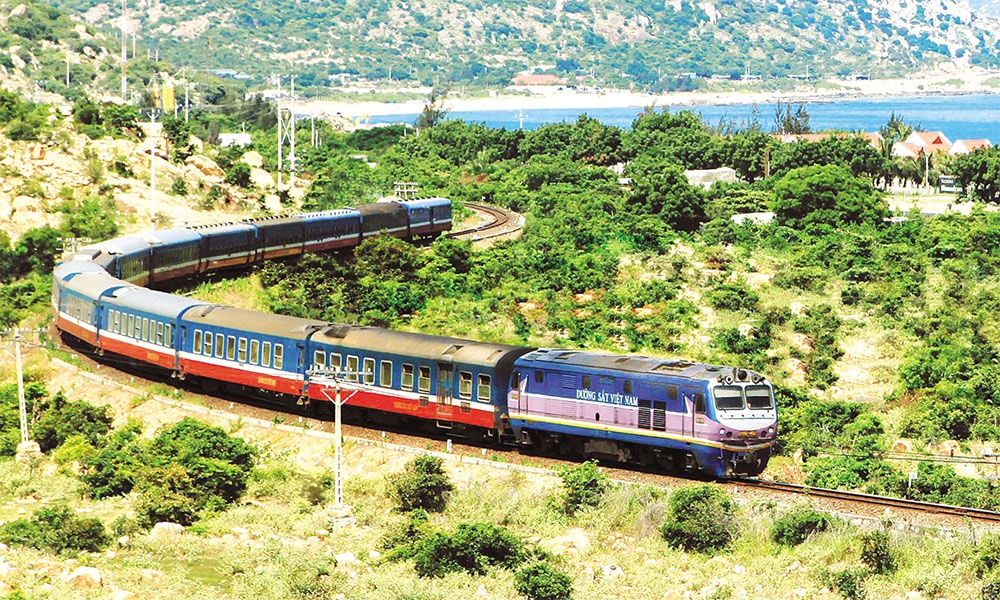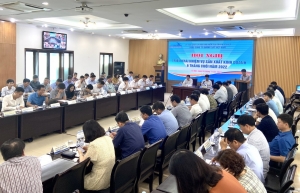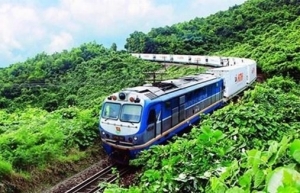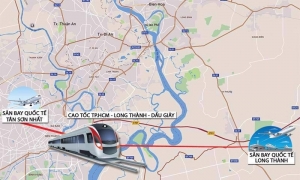Second chance here for high-speed rail
The Vietnamese government last week asked the Ministry of Transport (MoT) to “urgently work with the Ministry of Planning and Investment to conduct analysis, comparisons, and selection of, and propose an optimal scheme on investing and constructing the railway project, especially in terms of speed and transportation mode, roadmap, and preparation time, implementation, and completion of this project.”
 |
| With the new proposed railway, the travel time from Hanoi to Ho Chi Minh City would be about six hours, Le Toan |
It is believed the government will seek out the National Assembly’s (NA) approval of the major project in the legislature’s 2021-2026 tenure.
If approved, the 17-year fate of this project carrying both passengers and freight will be a big milestone, with the ultimate aim that it would take only six hours to travel from Hanoi to Ho Chi Minh City.
The MoT will make a feasibility report, adopt a design, and conduct site clearance before officially commencing construction in 2028-2029 of a number of bidding packages for the two sections of Hanoi-Vinh and Nha Trang-Ho Chi Minh City.
It has been proposed that the project’s trains use technologies similar to the Shinkansen train in Japan. Shinkansen uses a range of advanced technologies, achieving not only high speed but also a high standard of safety and comfort.
The biggest obstructions over the past decades making it hard for such a high-speed railway to be adopted have been the selection of speed, investment capital, and schemes on capital mobilisation, especially in the context of a limited state budget.
The General Statistics Office reported that in the first seven months of this year, total state budget revenues were estimated at $47.54 billion, up 18.1 per cent on-year. Total state budget expenditures are estimated to sit at $36.64 billion, up 3.7 per cent on-year. This has resulted in a 7-month budget surplus of $10.9 billion.
Last year, Vietnam saw a budget deficit of $12.46 billion, down by $2.48 billion against the initial estimates and equal to 3.41 per cent of realised GDP worth $365.21 billion.
According to the MoT’s pre-feasibility report on the project, the 1,435mm dual gauge railway will be about 1,545km long, running through 20 cities and provinces.
It will start at Hanoi’s Ngoc Hoi Station and end at Ho Chi Minh City’s Thu Thiem Station. The electric railway could allow for a speed of 320km per hour.
It is estimated that the total capital for the whole project will be about $58.7 billion including nearly $2 billion for site clearance, $31.5 billion for construction, $15 billion for purchasing and installing equipment, $5.8 billion for project management and consultancy, and $4 billion for provisions.
To ensure investment effectiveness and the state budget’s capacity, the project is expected to be divided into two stages. Under the first stage, the investment will be conducted in the Hanoi-Vinh and Nha Trang-Ho Chi Minh City sections of 665km with total capital of an estimated $24.7 billion. This stage will be constructed during 2027-2031 and become operational in 2032.
Under the second stage, the Vinh-Nha Trang section will be constructed with a total length of 894km and an estimated $34 billion. The Vinh-Danang and the Danang-Nha Trang sections will be open to traffic by 2040 and 2045-2050, respectively.
The MoT has been conducting numerous studies on this project since 2005, with a consultancy with various ministries, central organisations, experts, and scientists to develop and revise the pre-feasibility report for the project. A state appraisal council was in 2019 set up by the government to assess the pre-feasibility report.
In 2010, the $55.8 billion railway project was submitted by the government to the NA for consideration. However, the legislature turned down the project due to capital shortages and different views in the selection of technology.
Under designs at the time, the express route would allow passenger trains to travel at 300km per hour and would have a total of 27 stations. The total time from Hanoi to Ho Chi Minh City would be about five and a half hours.
Using 4,170 hectares of land and Japanese technology, the railway was then expected to be built between 2012-2035, with the first phase to be completed by 2020.
The then Minister of Transport Ho Nghia Dung reported that each year, it would need to mobilise $4.37 billion from the state budget, official development assistance, and enterprises for the project.
Dang Vu Minh, the then Chairman of the National Assembly Committee for Science, Technology and Environment (CSTE), said that on average, one kilometre of the railway would need $35.6 million of funding.
“Many said that the project also includes the construction of tunnels and assorted bridges. This means that total investment capital needed for the project would be far from the estimations,” Minh said.
Moreover, under government plans to develop Vietnam’s traffic networks before 2020, demand for investment capital for the traffic sector in the past decade would have been $160 billion, of which $70 billion would be for railways. “This is a big challenge for the project,” Minh said.
A CSTE report on the project stated that the total capital for the project’s first phase would be $21 billion, meaning that each year would need $2.63 billion which mainly depended on foreign loans. “This project will be a burden for the government’s debt, which has already been estimated to occupy 42 per cent of the GDP, while the country’s foreign currency stockpile remained low,” the report said.
Moreover, Vietnam’s GDP in 2010 sat at $110 billion. “With an average growth rate of 6-7 per cent per year, the country will not be able to sufficiently supply investment capital for many sectors, while capital for this project is too big,” the report added.
 | Vietnam Railways sees recovery in first half of 2022 Vietnam’s railway industry saw growth in revenue and cargo transport in the first half of 2022, heralding a recovery ahead. |
 | 51.3 million USD invested in Vinh – Nha Trang railway renovation, upgrade project The Ministry of Transport has approved the Vinh-Nha Trang railway renovation and upgrade project under the North-South railway with a total investment of over 1.2 trillion VND (51.3 million USD) from 2022 to 2025. |
 | International contractors given opportunity to join $3.9 billion railway Deputy Prime Minister Le Van Thanh has asked the Ministry of Transport (MoT) to work with Dong Nai, Binh Duong, Ba Ria-Vung Tau, and Ho Chi Minh City on the construction plan of two railway routes namely Thu Thiem-Long Thanh International Airport and Bien Hoa-Vung Tau. |
What the stars mean:
★ Poor ★ ★ Promising ★★★ Good ★★★★ Very good ★★★★★ Exceptional
 Tag:
Tag:
Related Contents
Latest News
More News
- Government moves to establish International Financial Centre (December 21, 2025 | 21:00)
- Vietnam's IFC to target global investment flows (December 21, 2025 | 18:00)
- Two national hospitals expand capacity with new facilities (December 20, 2025 | 09:00)
- Ha Tinh breaks ground on major Vingroup industrial and energy projects (December 19, 2025 | 18:24)
- EVN launches major power infrastructure projects nationwide (December 19, 2025 | 18:17)
- VAL inaugurates second production line to meet domestic animal feed demand (December 19, 2025 | 16:37)
- Sun Group pioneers urban tram system in Phu Quoc (December 19, 2025 | 15:00)
- Seven major projects launched to drive Hanoi’s next growth phase (December 19, 2025 | 14:00)
- Securing capital and efficiency for Vietnam’s 2026-2030 growth ambitions (December 17, 2025 | 10:00)
- Vietnam bucking trend in the global M&A landscape (December 16, 2025 | 14:20)






















 Mobile Version
Mobile Version